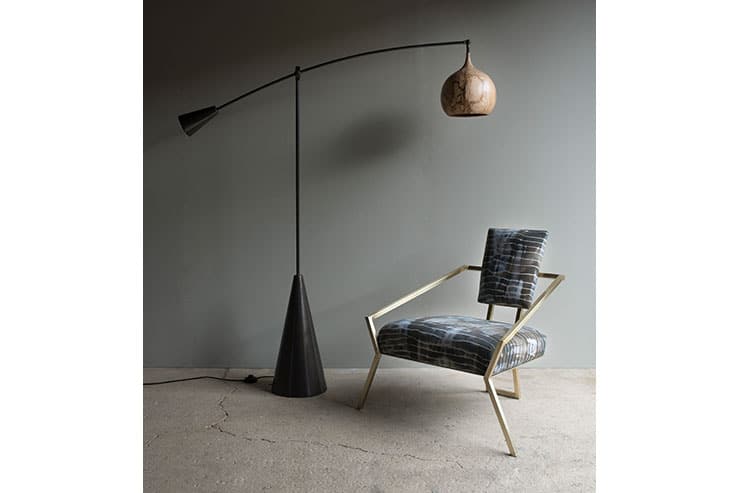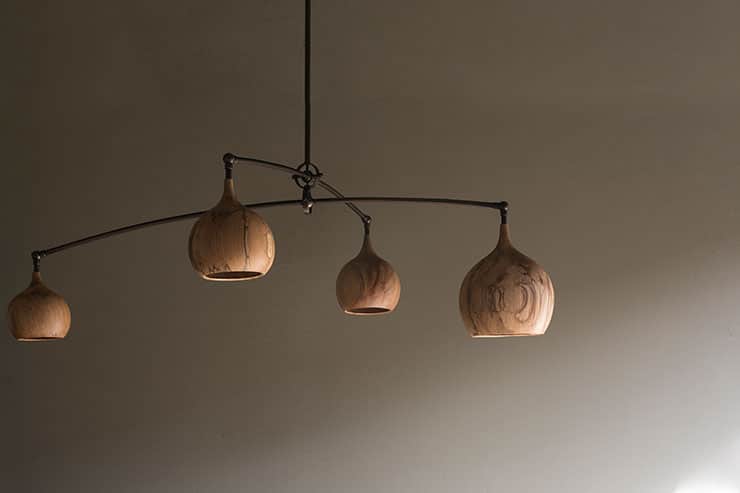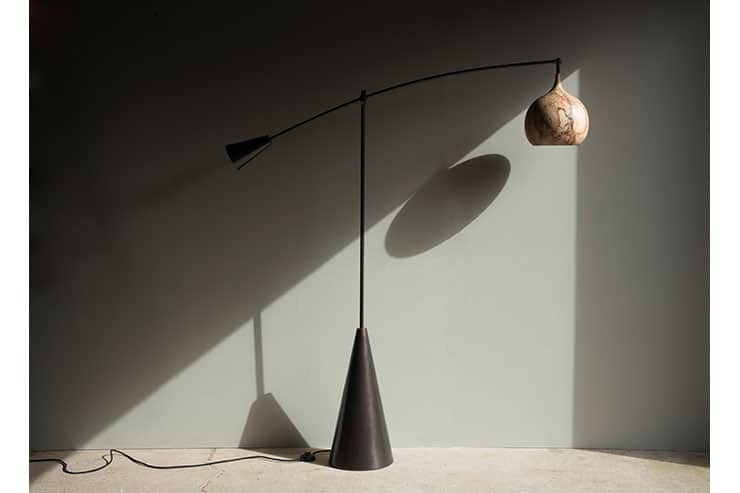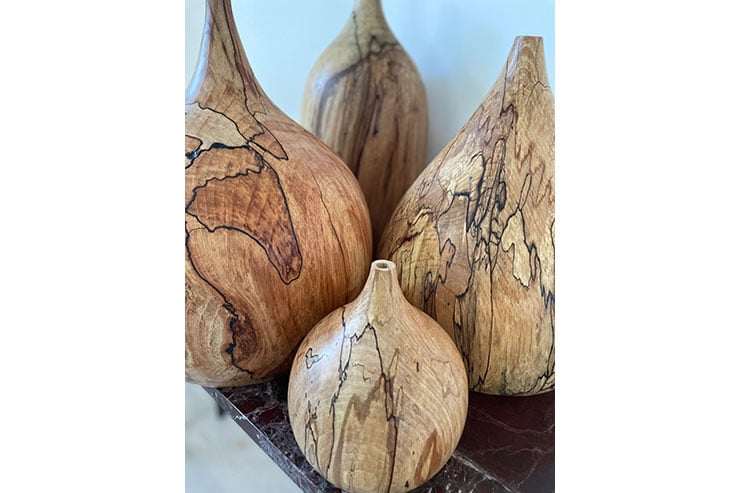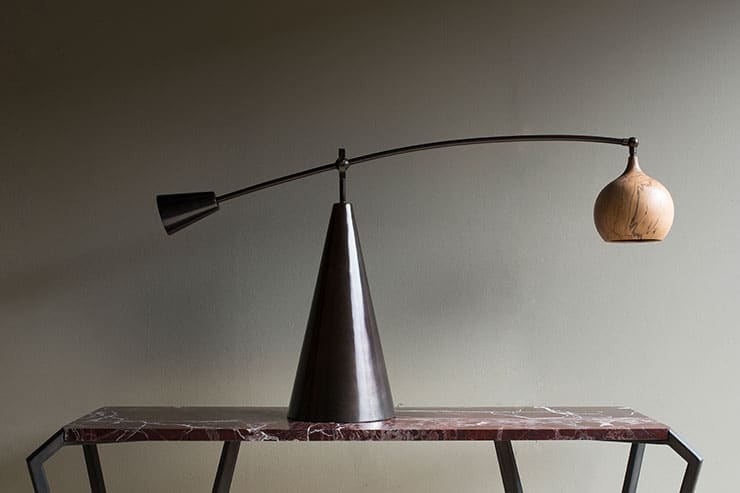This website uses cookies so that we can provide you with the best user experience possible. Cookie information is stored in your browser and performs functions such as recognising you when you return to our website and helping our team to understand which sections of the website you find most interesting and useful.
Cupola Poise - Tamasine Osher
ProductCupola PoiseManufacturerTamasine OsherDesignerTamasine Osher
Now more than ever we are aware of our impact on the earth. Deforestation, climate change, natural disasters and pandemics are regularly sweeping the globe and designs focusing on the interaction between nature and humans have never been more relevant.
The Cupola Poise design comprises two contrasting elements. Shade and structure. Shades are hand turned from whole pieces of naturally fallen spalted Beech foraged from field and forest. The timber is totally sustainable and each piece is unique in spalting* patterns. Nature decides for us on how the fungus will colonise the timber and each time the turning process commences it is an aesthetic surprise. In contrast to the organic shades, the metal parts are kinetic and human-engineered. The mechanism (which both pivots and swivels) is designed particularly for this piece. The table and floor lamps have a metal weight which counter balances the shade and is screwed up and down to control the height of the shade. The weight of the shade is different every time, nature dictates this as no piece is the same – the user can control it only by adapting the engineered parts. The two contrasting elements sit together in harmonious tension. The counterbalancing of these elements aims to recreate conflicts which often occur between human-engineering and nature.
Cupola Poise was conceived whilst exploring the emotional responses provoked by the moments in which human-made engineered structures meet the constant growth, change and repair of the natural world. Documenting the way nature interacts with architecture and human-made structures has always been an interest, particularly the tensions and contrasts inherent in the places where these elements collide, and the intense emotions these evoke.
The lighting range consists of floor lamp, table lamp, wall light and chandelier. Available in dark bronze or satin brass. Hand crafted in the UK from sustainable timber and recyclable brass.
*Spalted Beech: Spalting is the process by which certain funghi grow on dead or fallen trees. After colonizing the wood via travelling up the wood cells from the ends or from broken off branches it leaves a pattern. The process takes 2 to 3 years to reach the ideal stage to cut & season the timber.
